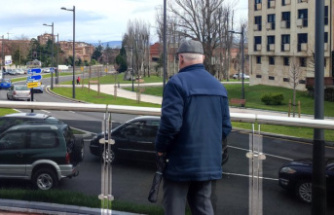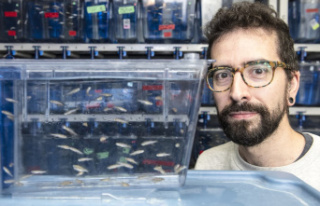Inside Montreal, journalist Louis-Philippe Messier travels mostly on the run, his office in his backpack, on the lookout for fascinating subjects and people. He speaks to everyone and is interested in all walks of life in this urban chronicle.
Orange cones have competition as symbols of Montreal. The "pedestrian labyrinths" of modular iron fences are beginning to mark the imagination.
A month ago, I got lost going to the convenience store. My street (Sainte-Catherine Est) is gutted by a construction site.
At a fork in the pedestrian maze, I took the wrong turn.
In fact, I took what the day before was the right path, but the maze changes configuration according to the work.
As disconcerting as they are, these pedestrian labyrinths testify to a new way of organizing construction sites, according to the urban planner Gérard Beaudet to whom I spoke to about this phenomenon.
"It's a novelty that this concern to give as full access as possible to all addresses while erecting a protective partition between pedestrians and workers," said this professor at the University of Montreal.
“The better it goes, the less cities want us to dig or block pedestrian routes,” a foreman of a street under construction in Rosemont that I visit with Professor Beaudet tells me.
"Each address is a construction site in itself, and if you see that we had to undo part of the sidewalk, it's because of unforeseen obstacles," explains an engineer I also met on site who prefers not to appoint.
He points me to old metal gas pipes that have been discovered. That didn't show up on the plans! There are always surprises! »
magic torpedo
A number of metal plates and wooden planks serve as a "bridge" over the holes from which the copper pipe "pullers" sit.
With pneumatic hammers nicknamed torpedoes, they perforate the ground laterally towards the ducts of the residences.
"That's the key instrument: the torpedo that allows you to drill to connect the houses to the aqueduct without having to touch the sidewalk or the fence or the balcony... because you're going under it" , rejoices Professor Beaudet.
Each tree on the site is caged for its protection.
“The root system of large trees is sometimes marked with red pencil on the ground to indicate where to avoid digging. »
Soon in the suburbs
Further down the street, a forklift lays an iron plate over a trench with surreal delicacy.
“I watch them and they are incredibly skilled with their machines: they could pick up a toothbrush with an excavator! said Professor Beaudet.
The expertise developed in Montreal will soon be used off the island.
“Several suburbs are starting to get old, and some will have to undertake gigantic projects to rebuild their infrastructure. »
The reader who revels in not living in Montreal while reading this column should therefore perhaps keep a little embarrassment!













